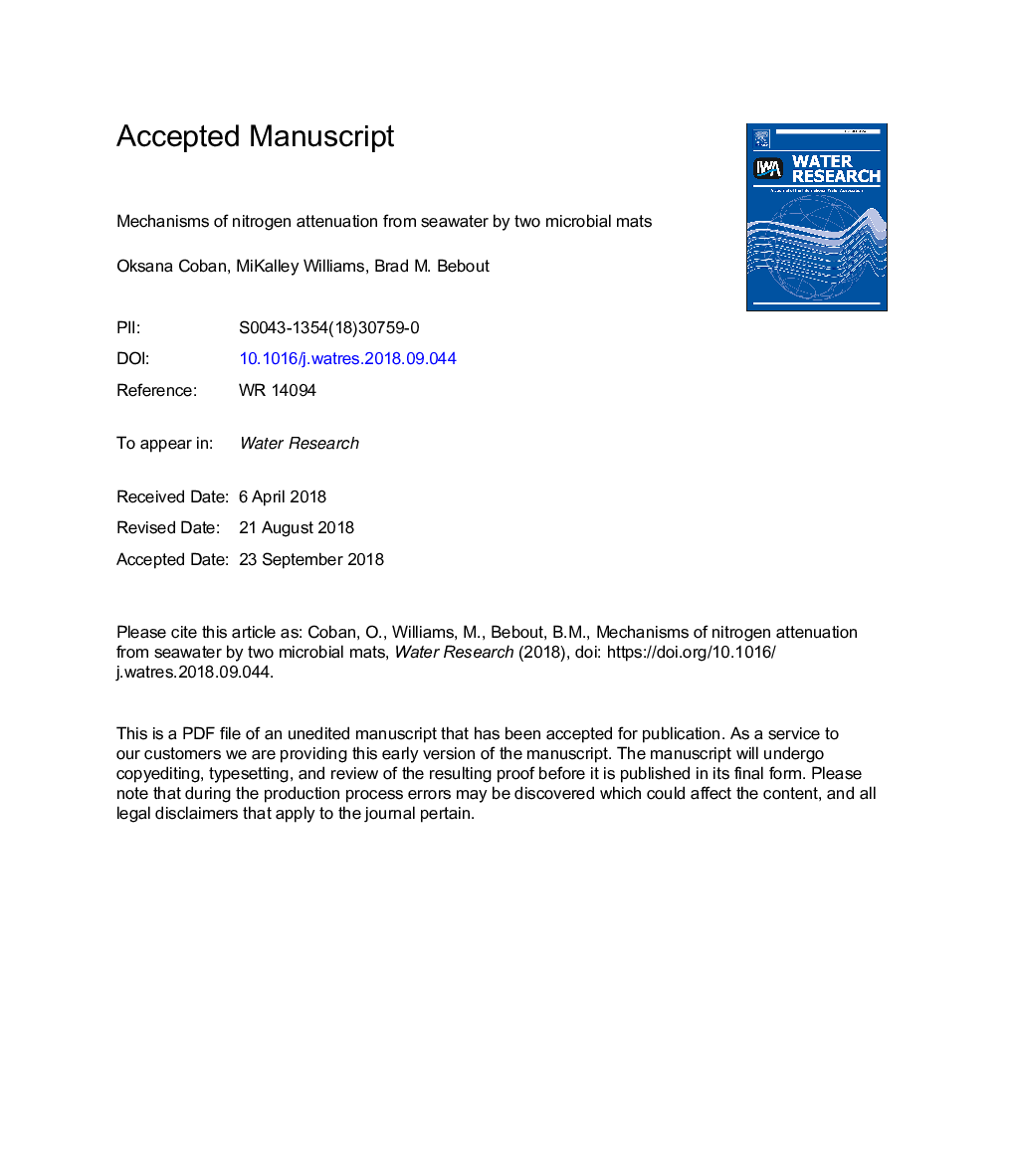| Article ID | Journal | Published Year | Pages | File Type |
|---|---|---|---|---|
| 11263061 | Water Research | 2018 | 39 Pages |
Abstract
Microbial mats, due to their high microbial diversity, have the potential to express most biogeochemical cycling processes, highlighting their prospective use in bioremediation of various environmental contaminants. In this study the mechanisms of nitrogen attenuation were investigated in naturally occurring microbial mats from Elkhorn Slough, Monterey Bay, CA, USA, and Baja California Sur, Mexico. Key processes responsible for this removal were evaluated using quantification of functional genes related to nitrification, denitrification, and nitrogen fixation. Both microbial mats were capable of removing high (up to 2â¯mM) concentrations of ammonium and nitrate. Ammonium assimilation rates measured for Elkhorn Slough mats showed that this process was responsible for most of the ammonium uptake in these mats. While Elkhorn Slough mats did not show any evidence of nitrogen removal pathways other than microbial assimilation, Baja mats exhibited the potential for nitrification, denitrification, and DNRA as well as assimilation. The results of this study demonstrate the potential of microbial mats for bioremediation of nitrogenous pollutants independent of the mechanisms responsible for their removal.
Related Topics
Physical Sciences and Engineering
Earth and Planetary Sciences
Earth-Surface Processes
Authors
Oksana Coban, MiKalley Williams, Brad M. Bebout,
